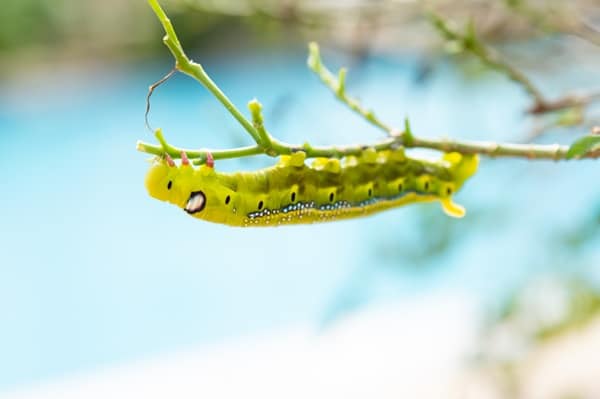In the quest for a verdant, flourishing garden, gardeners often face the challenge of battling against various garden pests that threaten plant health and productivity. While the presence of some insects can be beneficial, aiding in pollination and natural pest control, others can cause significant damage, feasting on leaves, stems, and roots. This article delves into effective strategies to maintain an insect-free garden, focusing on eco-friendly and sustainable methods. From identifying invaders to adopting beneficial cultural practices, readers will learn how to protect their gardens in harmony with nature, ensuring their green spaces remain vibrant and thriving.
Contents
Identify the Invaders

Successful garden pest management begins with knowing one’s enemy. Gardeners should familiarize themselves with the types of insects that commonly invade gardens in their area. Understanding these pests’ appearance, lifecycle, and habits is crucial for effective control. Regular garden inspections can help identify problems early before they escalate. Gardeners should look for signs of distress in plants, such as unusual leaf spots, gnawing damage, or wilting, which may indicate the presence of harmful pests.
Equipped with knowledge about potential invaders, gardeners can take proactive steps to protect their plants. This might include introducing natural predators, adjusting planting schedules to avoid peak pest seasons, or employing targeted natural remedies. Identifying pests accurately ensures that any actions taken are effective and minimize harm to beneficial insects, contributing to a balanced and healthy garden ecosystem.
Natural Predators

Introducing or encouraging natural predators into the garden is a cornerstone of organic pest control. Beneficial insects such as ladybugs, praying mantises, and lacewings feast on common garden pests like aphids, mites, and caterpillars. By creating a welcoming habitat for these predators, gardeners can naturally significantly reduce the population of harmful insects.
To attract beneficial insects, gardeners can plant various flowering plants that provide nectar and pollen throughout the growing season. Plants like dill, fennel, and marigolds add beauty to the garden and serve as magnets for these helpful creatures. Additionally, maintaining a small undisturbed habitat, such as a leaf pile or a log, can offer shelter and breeding grounds for predator insects, ensuring their presence in the garden year-round.
Companion Planting

Companion planting is an age-old gardening technique that involves placing certain plants near each other for mutual benefit. Some plants have natural substances in their roots or foliage that repel pests, making them excellent neighbors for more vulnerable species. For instance, marigolds emit a scent that deters nematodes and other insects, while basil can help repel mosquitoes and flies when planted near outdoor seating areas.
Besides repelling pests, companion planting can also attract beneficial insects, improve soil health, and enhance plant growth. For example, planting nitrogen-fixing legumes near nitrogen-hungry crops can reduce the need for chemical fertilizers. This method of planting not only conserves the gardener’s resources but promotes a more diverse and resilient garden ecosystem.
Physical Barriers

Physical barriers can provide immediate and effective protection against insect pests. Materials such as garden fabric, nets, and floating row covers can prevent insects from reaching plants while still allowing light, air, and moisture to penetrate. These barriers are especially useful for young plants most vulnerable to pest damage.
When implementing physical barriers, it is important to install them properly and check them regularly for damage or gaps where pests might enter. Additionally, gardeners should consider the lifecycle of their plants; for example, pollinating insects must access flowers for fruit to set, so covers must be removed or modified to allow for pollination at the right time.
Natural Insecticides

Natural insecticides can provide a safer alternative to chemical pesticides when pests invade. Ingredients like neem oil, diatomaceous earth, and insecticidal soap can be effective against various garden pests. Neem oil, extracted from the seeds of the neem tree, disrupts the life cycle of insects at all stages, making it a versatile tool in the gardener’s arsenal.
However, it’s important to use these products judicially. Even natural insecticides can harm beneficial insects if not applied correctly. Gardeners should target applications to affected areas when beneficial insects are least active, such as early morning or late evening, and follow label directions carefully to minimize any negative impact on the garden ecosystem.
Cultural Practices

Cultural practices, such as crop rotation, proper plant spacing, and garden hygiene, are crucial in managing garden pests. Crop rotation prevents the buildup of soil-borne pests and diseases by changing the location of plant families from year to year. This practice disrupts the life cycle of pests that have come to expect certain crops in specific locations. Similarly, proper spacing between plants ensures adequate air circulation, which can help prevent the spread of fungal diseases and make it harder for pests to move between plants.
Maintaining garden cleanliness by removing dead leaves, spent plants, and other debris reduces habitats for pests to overwinter and breed. Sanitation practices extend to tools and containers, which should be cleaned regularly to prevent the spread of disease. By adopting these simple yet effective cultural practices, gardeners can significantly reduce pest populations and the need for interventions, leading to a healthier, more resilient garden.
Soil Health

Healthy soil is the foundation of a healthy garden. Soil rich in organic matter supports vigorous plant growth, which is more resistant to pests and diseases. Incorporating compost into the garden adds nutrients and improves soil structure, water retention, and microbial activity. These benefits help plants develop strong root systems and withstand stress, including pest attacks.
Mulching plays a dual role in soil health and pest management. A layer of organic mulch, such as straw, leaves, or wood chips, conserves moisture, suppresses weeds, and can prevent soil-dwelling pests from reaching plant stems. As mulch breaks down, it enriches the soil, fostering a vibrant ecosystem underground that supports plant health above ground. Gardeners who prioritize soil health find their gardens more productive and naturally resistant to pests.
Watering Techniques

Water is life for both plants and pests. Overhead watering can create conditions favorable to pests and diseases, such as leaf wetness and high humidity. Drip irrigation or soaker hoses deliver water directly to the soil, minimizing leaf wetness and reducing the risk of fungal diseases. Watering in the morning allows any moisture on leaves to dry during the day, decreasing disease risk.
Proper watering goes beyond the method; it also involves timing and quantity. Deep, infrequent watering encourages plants to develop deep root systems, making them more drought-tolerant and less susceptible to surface pests. By understanding their plants’ specific water needs and avoiding overwatering, gardeners can prevent stress and make their gardens less inviting to pests.
The Bottom Line
Gardening is a labor of love, and protecting one’s garden from pests is an essential part of that labor. The strategies outlined in this article—from identifying pests to enhancing soil health—emphasize a holistic, eco-friendly approach to garden management. By understanding the intricate balance of the garden ecosystem and working with nature, not against it, gardeners can create vibrant, healthy gardens that thrive without harsh chemicals. Patience, observation, and a little effort can yield a garden that’s productive and a sanctuary for beneficial wildlife, contributing to the biodiversity that keeps our planet flourishing.